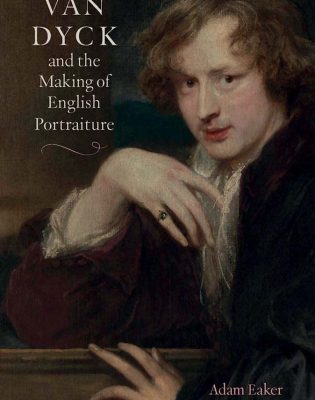Antwerp-born Anthony Van Dyck occupies an important, if complex, place in the history of English painting. Breathtakingly talented in his virtuosic handling, during his time in England Van Dyck was also a debonair court painter who materialized his elite patrons’ social finesse. The impresario of Charles I and Henrietta Maria’s magnificent visual personas during the halcyon days before the English Civil War and the master of English aristocratic portraiture par excellence, Van Dyck fused style and status.
Historians of Netherlandish art need no such introduction, but it is notable that Eaker is invested in making the case for serious critical enquiry of English-period Van Dyck beyond connoisseurial, technical and archival research. Numerous exhibitions have been devoted to Van Dyck, including the one co-curated by Eaker himself and Stijn Alsteens at the Frick Collection in 2016, Van Dyck: The Anatomy of Portraiture. But, as Eaker rightly points out, Van Dyck has eluded sustained critical engagement with feminist and queer theories so prevalent amongst modern-day art historians and literary scholars. Eaker does not shy from aspects of style, iconography and provenance and indeed his argument is built on close and measured visual analysis of pictures, many of them in the Frick and at the Metropolitan Museum of Art, where he now works as associate curator. Eaker crafts an argument that engages not only with Van Dyck but his legacy and what this tells us about social and artistic hierarchies as well as genealogies of artistic influence and national identity.
Built through visual and literary analysis (drama, poetry, art treatises, artist biographies) as well as engagement with historic accounts, Eaker traces the reception of Van Dyck from his contemporaries in the 1630s to genteel female artists of the Interregnum and Restoration and finally through to eighteenth-century London painters. Focusing on Van Dyck’s insistent fashionability and sociability in his art and persona, cultivating courtly charm and presenting conversational and technical skill, the book maps “Van Dyck’s legacy through a cultural history of the portrait sitting” from Van Dyck through the late Georgian period” (183).
Examining the “feminine” and social qualities of Van Dyck’s works – as perceived and performed – Eaker focuses on the studio as a site of gendered, class and racial encounters. With the artist, sovereign, patron-sitters, assistants, and beholders all actors in this portrait performance, Van Dyck created a model for painterly performativity. Moreover, Eaker situates Van Dyck as the progenitor of English artists who position the “process” of painting centerstage.
Dedicated to elite portraiture performances infused with charisma and manifesting virtuosic touch, this is the paradigm of the “Van Dyckian painter” emulated by London painters, including Peter Lely, Joan Carlile, Mary Beale and Richard and Mary Cosway. The continuity of Van Dyckian style, iconography and compositional prototypes as well as the model of social performance “speaks to its powerful ideological importance as a marker of continuity in the face of societal transformations” (109). In the eighteenth century, while elite portraiture persisted and Van Dyck continued to be quoted in aspects of pose, gesture and dress, his reception was far more nuanced. In the face of anxieties about effeminacy and luxury and in an artistic and social milieu which prized the heroic narratives of history painting, the English-born William Hogarth “functioned as the founding father for nationalist narratives of British art” (117).
This is not only the story of Van Dyck’s studio performances but those of artists more generally, examining the tropes established in antiquity and the social and artistic agendas encoded in them. In negotiating layers of representation – anecdote, portrait, stage, poem – Eaker deftly demonstrates the fascination with the portrait sitting, an arena to stage social dynamics and erotic tensions from antiquity through the eighteenth century.
Eaker’s book is finely crafted and fluently written. It synthesises a staggering amount of primary and secondary source material and builds a compelling argument. His surprise that “he did not encounter a single one of his [Van Dyck’s] works in … [his] academic training” (181) despite their proliferation in galleries and popularity on the art market, is not just a reflection of Van Dyck’s relative critical standing but also the unfortunate dearth of academics who teach, research and supervise graduate work on Van Dyck or for that matter on art in early modern England. Here’s hoping that Eaker’s book encourages more scholarly discourse and entices more emerging academics.
Erin Griffey
University of Auckland, New Zealand
